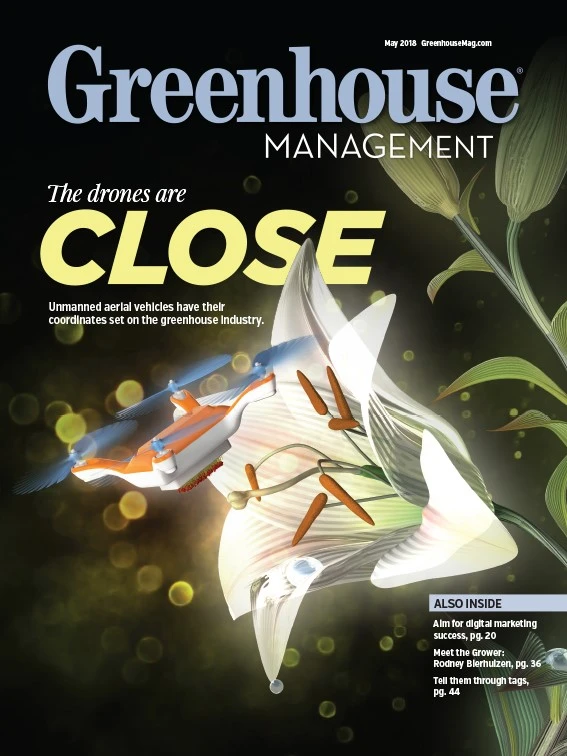

Garden center customers and employees rely on care tags and labels to identify plants and their varieties.
Meadowridge, a wholesale grower in Zeeland, Michigan, uses tags and labels to its advantage by providing end consumers with information about how to keep plants alive, says Lindsay Blauwkamp, office and account manager. A successful consumer is much more likely to be a repeat customer, she adds. “When they return for future plant purchases, it’s a win for our customers and ultimately us as well.”
Every item Meadowridge sells has a UPC label or tag with the following information: item description, barcode, weights and measures, responsible party (who the plant is grown by or grown for) and light exposure. In addition, every item comes with a variety-specific care tag. “We typically have two tags or labels per item, one to identify the item specs and one with variety specific care information,” Blauwkamp says.
Building a new brand
Some growers go beyond providing information and use tags and labels to build brand awareness. About a decade ago, management at Dan & Jerry’s Greenhouses, with locations in Minnesota and South Dakota, felt they didn't have a unique brand to attract customers to the myriad of green goods they supply to retail outlets.
“We wanted to differentiate between our company and a brand that would be recognizable to the consumer,” says Roger Litchy, sales and marketing manager. “We started with our vegetable plants, working closely with a design firm in developing a name and logo. We hit upon ‘Farm Fresh Selects’ and we knew once we launched it that it would eventually expand to our entire line of products. The brand quickly developed a following and people have come to know and look for the Farm Fresh Selects brand, and ask for it by name.”
The company not only places informational tags and labels on its products with the Farm Fresh Selects logo, it also provides point-of-purchase items, such as signs, bench tape and banners that are placed near displays, leading customers to their products. “It provides a nice, concise appearance in retail outlets,” Litchy says.
Dan & Jerry’s Greenhouses changes its tags, labels and other logoed materials every three to four years to keep the brand fresh. “The changes tend to be slight,” Litchy says. “The tags and labels are an extra cost, and the one thing we are careful of is ordering too much inventory that we [would be] stuck with if we were to decide to change the appearance of them the following year.”
Meadowridge has an innovative custom vegetable tag program called “Healthy Harvest” that provides plant care information, as well as promoting “healthy living” with a recipe for each variety. “One project I have in the works right now is designing a better UPC label/tag for our patio planters and hanging baskets that includes the information already mentioned, but does a better job of visually calling out whether the item is for sun or shade,” Blauwkamp says. “Customer feedback has revealed that light exposure is what they seek out first, and we want to make that information front and center on the side of the pot or basket.”

Educating consumers about plant care
A project Meadowridge is rolling out this spring is a new custom care tag for mixed combinations. “It covers everything from light requirements [to] water needs, plant food, deadheading, trimming and monitoring for disease and pests,” Blauwkamp says. “Our goal is to show our customers — independents and regional chains — that we are willing to invest in providing their customers with the right information to make their ‘plant experience’ a success.”
While acknowledging that it can certainly be of value, Blauwkamp says the industry may tend to “over-brand.” “I don’t think consumers really care what brand they are buying most of the time,” she says. “If it appeals to them and the plant is healthy, then that’s what matters. Providing tangible information that the consumer can use to be successful is the most important thing we can do. We carry brands that are the most recognizable, and for those it is important to identify them with packaging, including tags and labels.”
Blauwkamp believes much information on care tags is “too general” and doesn’t set the end consumer up for success. “In this industry we too often assume that consumers know what to do with plants,” she says. “The truth is a lot of them have no idea. Our industry needs to better communicate plant care, otherwise my fear is that consumers may become disheartened and give up altogether because they failed as a green thumb.”
And creating green thumbs is really what growers and greenhouse owners should be all about.

Explore the May 2018 Issue
Check out more from this issue and find your next story to read.
Latest from Greenhouse Management
- GM CEA HERB Part 2: A guide to increasing the sowing density of culinary herbs
- GM CEA HERB Part 1: Best practices for producing culinary herbs in controlled environments
- USDA fires experts on invasive pests, including Asian citrus psyllid, chilli thrips
- CEA Alliance celebrates bipartisan introduction of Supporting Innovation in Agriculture Act
- Dümmen Orange North America celebrating 25th anniversary in 2025
- PG CEA HERB Part 1: Best management practices for culinary herbs
- Lawsuit challenges new H-2 visa rules
- Illinois Landscape Contractors Association changes name to Landscape Illinois





